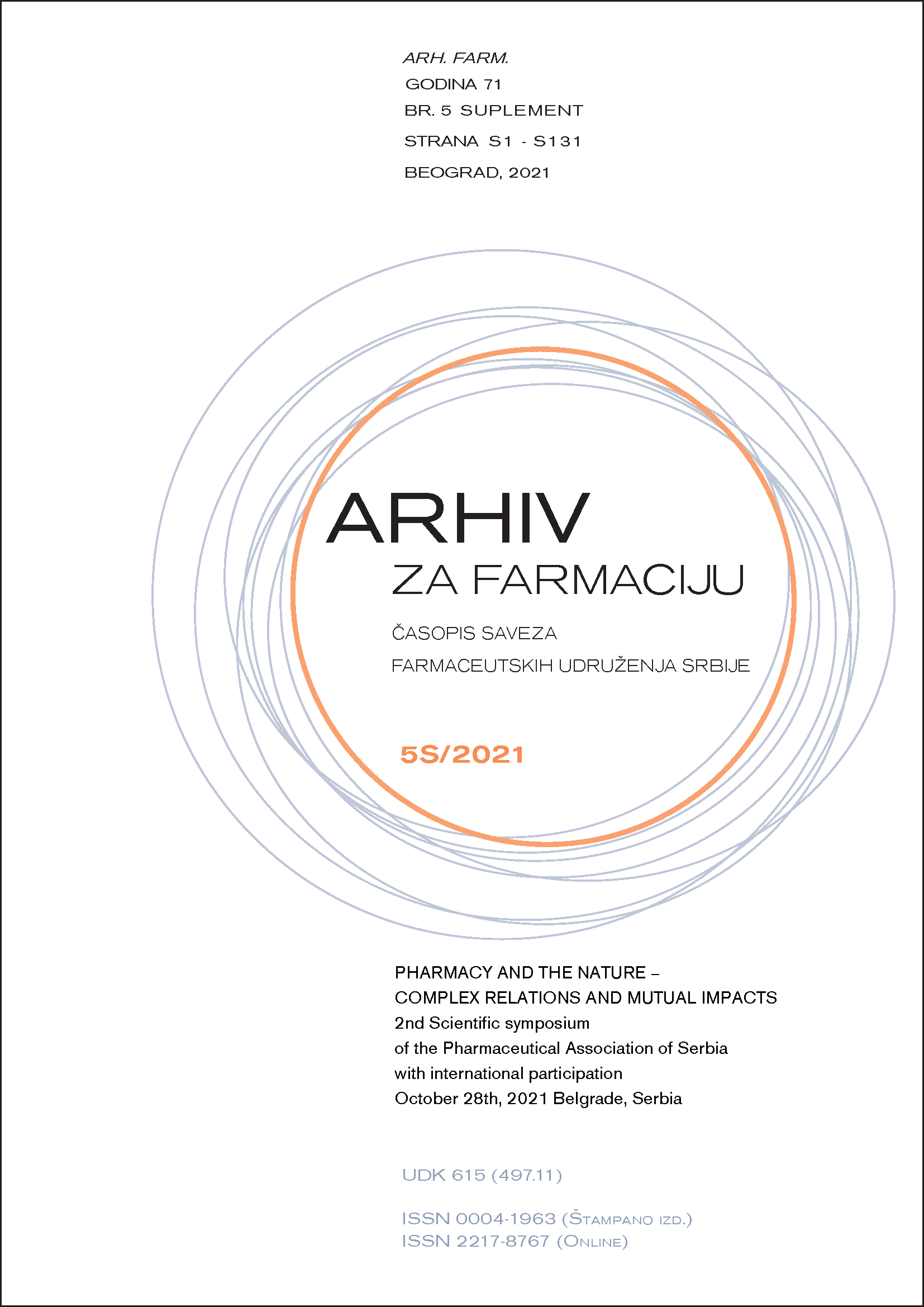EXTRACTION AND SPECTROPHOTOMETRIC ASSAY OF BETA-CAROTENE IN SUNSCREEN AND TANNING PRODUCTS
Abstract
Beta-carotene is a fat-soluble pigment from the group of carotenoids, proven to be beneficial for the nourishment and the protection of the skin exposed to UV radiation, as well as for the enhancement of the tanning process. Although it can be added to the formulations of cosmetic products in both its synthetic and natural forms, herbal extracts or oils are most frequently used. Manufacturers often emphasize its presence in their cosmetic lines, while there is no available data about the allowed or recommended concentration in cosmetic products (1,2). The aim of this study was the determination of beta-carotene in different formulations of sunscreens and tanning products, available in local pharmacies and drugstores, in order to confirm the presence and determine the concentration of beta-carotene in final formulations of these products. Furthermore, the optimal method of extraction for the pretreatment of cosmetic creams, lotions and oils was developed for the purpose of their spectrophotometric analysis. Seven different commercial sunscreen and tanning products were analyzed. Sample preparation was carried out by extraction using different mixtures of organic solvents. Analysis of the prepared samples was performed using a UV-Vis spectrophotometer at a wavelength of 453 nm and a calibration curve method. The solvent extraction efficiency was tested for eight combinations of mixtures of organic solvents. Solvent mixture dichloromethane: absolute ethanol (7:3, v/v) has proven to be the most appropriate and effective for the extraction of beta-carotene from analyzed cosmetic products. The content of beta-carotene was in the range from 9.43±0.77 mg/100 g to 85.86±4.17 mg/100 g. In general, tanning products contained larger amountsaof beta-carotene than products mainly made for protecting the skin from UV radiaton. Notable differences wereaalso found depending on the type of the formulation and the form of added beta-carotene. Cream and lotion preparations contained more beta-carotene than oil-based preparations, and its highest content was achieved by combined addition of enriched herbal extracts and synthetic beta-carotene. The proposed methods for extraction and spectrophotometric analysis were successfully applied for beta-carotene determination in all analyzed samples, but its content in cosmetic products available on the market varies significantly. For the purpose of ensuring more detailed confirmation of their efficacy and quality, further research should be focused on the determination of optimal concentrations of beta-carotene in cosmetic products.

